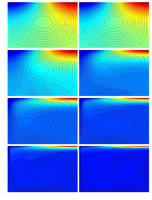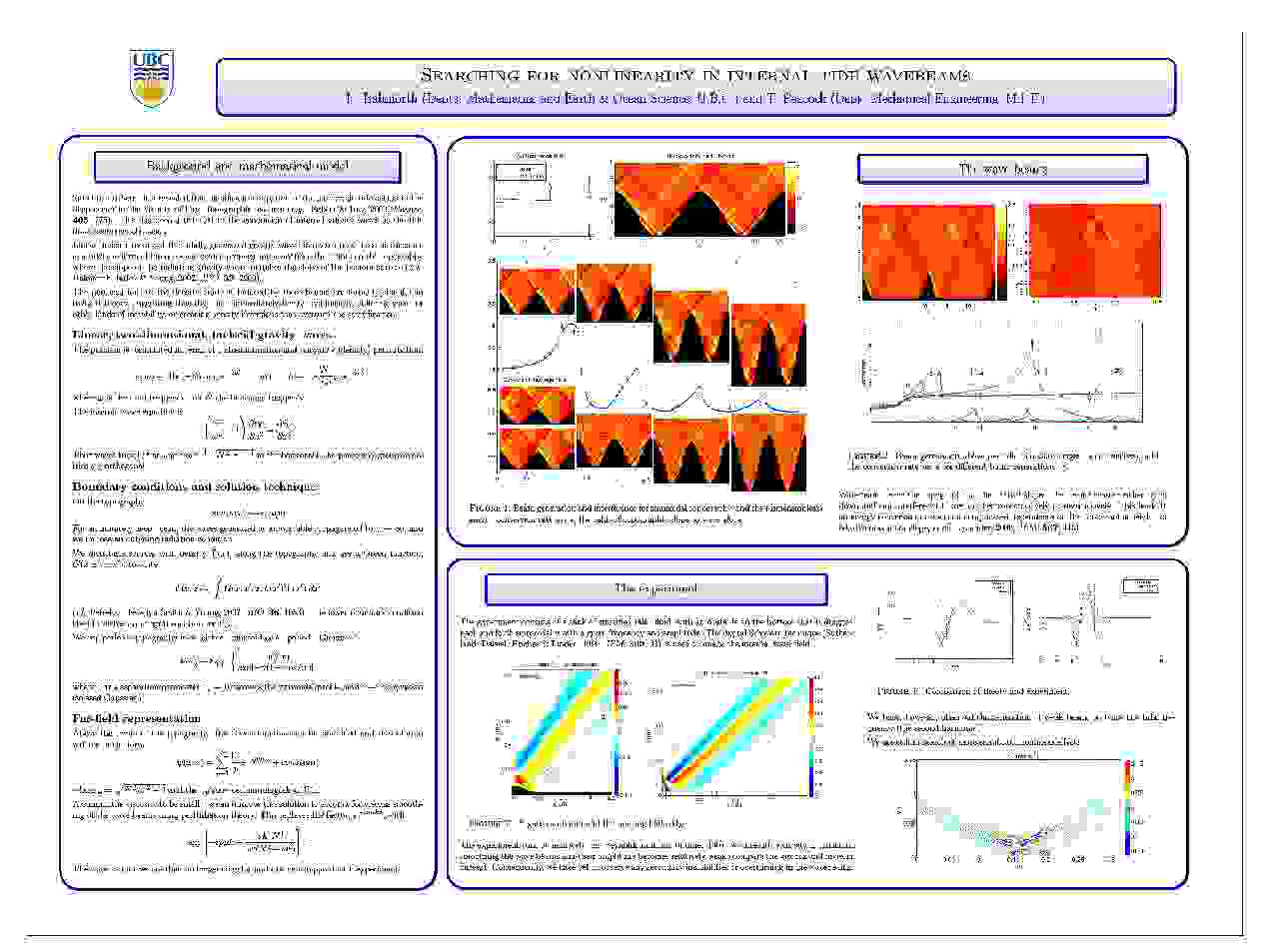Dr. Neil Balmforth
RESEARCH INTERESTS
Waves, Mixing, Tides And Convection:
In the ocean, mixing spans and unites a broad range of scales, from micrometers to megameters, and plays a key role in maintaining the global balances of heat and salinity and driving large-scale flow. Yet, despite its importance, there is still a great deal of ignorance about how mixing occurs in the ocean. One particular problem that connects modern oceanography with classical astronomy, is how tidal dissipation occurs in the ocean. It was once thought that the primary source of dissipation occurred in shallow seas (such as the Irish sea), however, there is recent evidence to suggest that tidal dissipation also occurs in the deep ocean through the action of the tide flowing over topographic features on the ocean floor. Another recently discussed issue is whether the solar heating of the ocean surface, being variable in latitude, can by itself drive large-scale ocean circulation. An old statement by Sandstrom claiming the negative is not based on watertight mathematical arguments. More recent work (Paparella and Young's "Anti-turbulence" theorem) has established limits on the form of the circulation, but not discounted it entirely, leaving open the form of this "horizontal convection".
Many of these problems were done in collaboration with
Bill Young
and
Tom Peacock, and it would be rude not to mention Glenn Ierley.
the tide by topography
(the colourmap is a snapshot of the instantaneous density field associated with the radiated waves; sharp beams emanate from points where topographic slopes approach the wave angle)
(temperature distribution and circulation pattern for steady solutions of two-dimensional horizontal convection; each panel corresponds to a different Rayleigh number, which increases from top to bottom)
(by an unsteady cellular velocity field with the scalar supplied diffusively at the boundaries)

